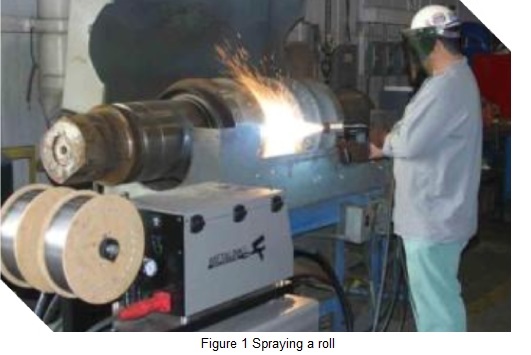- MetalinkWear.com
- LoneStarChemical.com
- Employment
- Contact Us
-
Knowledge Base
- Bearing, Bushing, and Seal Fits Repair
- Centrifugal Pump Coating
- Chutes and Exhauster Fan Repair
- Cobbles prevention slippage reduction
- Cooling Tower Distribution Pipe Repair
- Cracked Engine Block Repair
- Flange Repair
- Flat Back Elbow Repair
- Heat Exchanger Repair and Coating
- Keyway Repair
- MSDS
- Pipe and Leak Repair
- Process Cyclone Repair
- Pump Housing Crack Repair
- Pump Impeller Repair
- Pump Volute Repair
- River Discharge Pump Maintenance
- Scored Hydraulic Ram Repair
- Shaft Repair
- Spline Shaft Repair
- Split Case Housing Repair
- Stripped Thread Repair
- Surface Preparation for Polymer Application
- TSA Surface Preparation and Application
- Tube Sheet Repair
- Valve Seat Repair
- What is TSA?
- MSDS
Cobbles prevention slippage reduction
Coatings to reduce slippage may be applied to steel mill rolls. This process is best accomplished immediately after machining new passes on the roll and many companies apply the coating at the lathe site where the roll was machined (reducing the need to handle the roll again). The metal spray will not stick to anything past approximately 18 inches from the tip of the gun and simple hydrocarbon lubricants serve as a release agent for any over spray. If there is an area where spray is not desired, simply coat it with a light lubricant. If rolls are transported elsewhere to be coated, be careful not to contaminate the surface of the roll with greasy slings or touch the intended spray surface with your hands. If this occurs, clean the surface thoroughly with a non-residue pure safety solvent such as Metal Prep II™.

Please note, if rolls cannot be coated soon after machining, it is advisable to wrap the freshly machined roll in stretch plastic to prolong the buildup of surface oxides which will reduce the adhesion strength of the deposit.
When spraying a pass on a steel forming roll, use a relatively low rpm setting (50 or less) and spray a layer approximately .003 to .004 thousands of an inch of 760 Ultra Grip wire, using the high velocity air cap at a distance of approximately 6 to 8 inches from the roll.

This should be barely enough to turn the metal grey and remove the shine from the freshly machined roll. This will prevent corrosion from forming on the roll underneath on any adjacent passes that are not being used at the moment.
A coating more than approximately .003 to .004 thousands thick is a waste of time and product. Applying too thick of a coating could even produce more slippage problems than it prevents. The idea is to spray just enough coating to provide traction for the first billet or two and then disappear. By then, the roll should have developed a cross-check heat pattern on the roll and will “bite” the billet by itself. Coarseness of texture can be varied somewhat by decreasing the air pressure from 60 or 70 psi down to 50 or even less.
If addition texture is desired (for roughing rollers, etc.) simply replace the high velocity air cap with the coarse texture air cap and very lightly coat the same pass from a distance of about 9 to 12 inches. This will produce a texture approximately that of a 24 grit sand paper, and should only be used in areas where extreme bite is desired.
Technical questions and troubleshooting contact Matt Peterson
Email: matt@appliedmaintenance.com
Phone: 409-994-5751
Comments
No posts found
